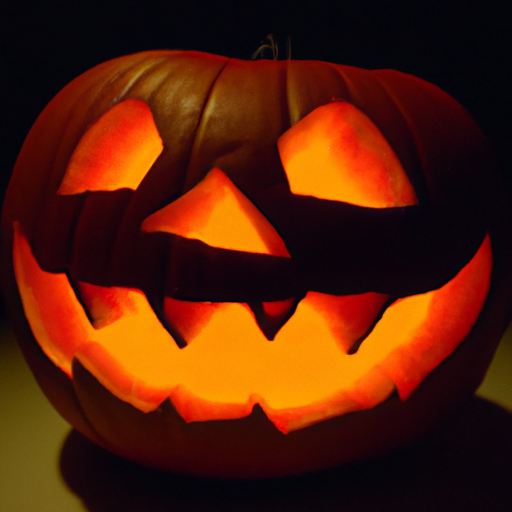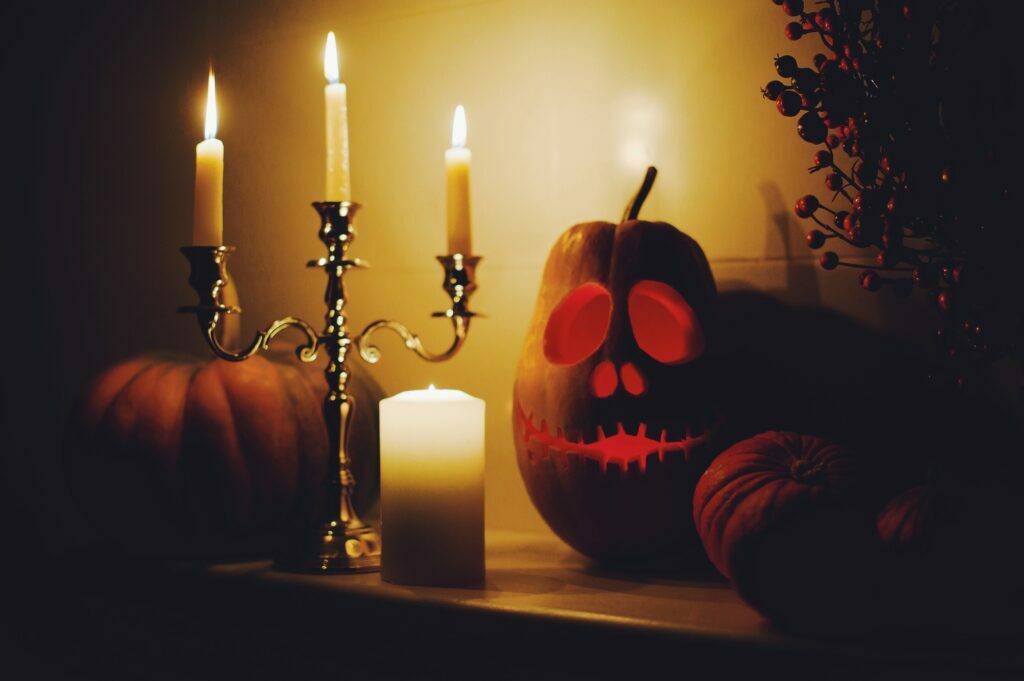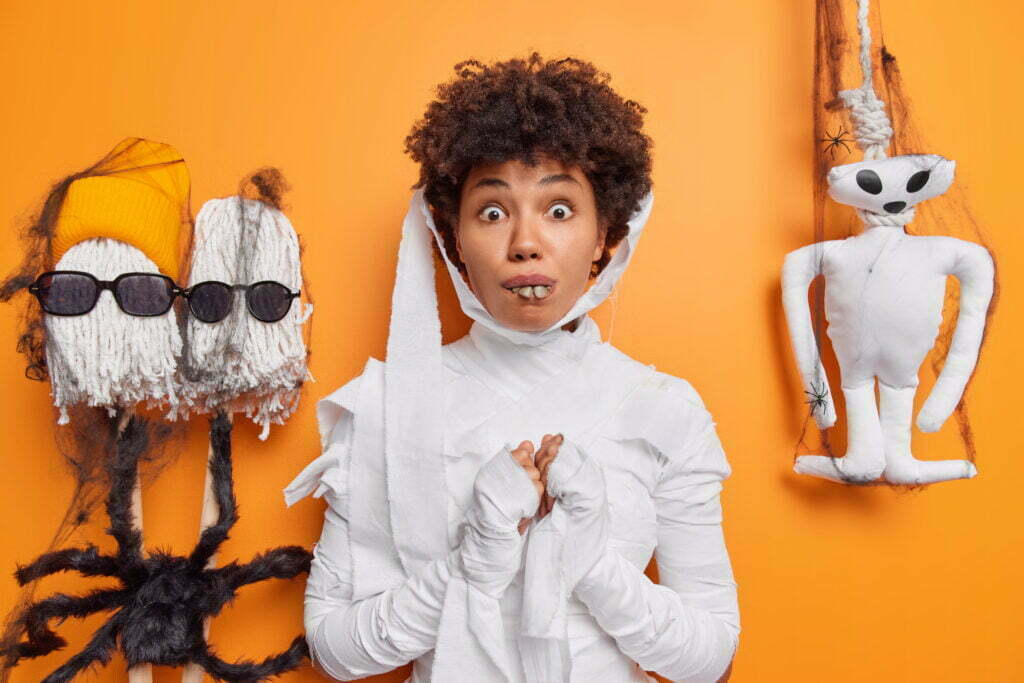So you’re getting all geared up for Halloween, trying to decide on the perfect costume that will make heads turn and give everyone a good fright. But have you ever stopped to think if it’s really appropriate to dress up in a scary costume? Halloween, traditionally known as a night of terror and mischief, may have some hidden implications when it comes to choosing a costume. While some may argue that scaring people is all part of the fun, others believe that it can cross the line and potentially offend or traumatize others. In this article, we will explore both sides of the debate and help you make an informed decision on whether or not you should don a frightening costume this Halloween.
The Tradition of Halloween Costumes
Halloween, celebrated on October 31st each year, is known for its festive decorations, spooky stories, and creative costumes. The tradition of wearing costumes on Halloween dates back centuries and has evolved significantly over time. Halloween costumes provide an opportunity for individuals to express their creativity, embrace their favorite characters, and immerse themselves in the spirit of the holiday. This article will explore the origins of Halloween costumes, the debate around cultural appropriation, the impact on psychological well-being, societal perceptions and reactions, safe and sensitive Halloween celebrations, parental responsibility in costume choices, considerations for costume designers, the influence of media and popular culture, and community guidelines for cultural sensitivity.
Halloween as a Celebration of the Dead
Halloween has its roots in ancient Celtic festivals, particularly the festival of Samhain. The Celts believed that on the night of October 31st, the boundary between the living and the dead blurred, allowing spirits to cross over into the earthly realm. As a way to ward off these roaming spirits, people would dress in costumes made from animal skins and masks. The tradition of dressing up on Halloween, therefore, has its origins in a deep-rooted belief in the supernatural and the need for protection.
The Origin of Scary Costumes
Over time, Halloween costumes have become more diverse and encompass a wide range of themes, characters, and ideas. While costumes based on popular culture, superheroes, and fairytale characters are common, scary costumes have remained one of the staples of Halloween attire. The concept of scary costumes can be traced back to the ancient Celtic festivals, where costumes were worn as a means of warding off evil spirits. Today, scary costumes often draw inspiration from folklore, horror movies, and mythical creatures associated with fear and the supernatural.
The Evolution of Halloween Costumes
Halloween costumes have evolved significantly from their ancient origins. In the early 1900s, Halloween costumes primarily consisted of homemade creations made from recycled materials and household items. Costumes were often simple and involved characters such as witches, ghosts, and skeletons. As the years went by, commercialization and mass production led to a wider variety of costume options. Costumes based on popular movies, television shows, and iconic figures became widely available, allowing individuals to embody their favorite characters during the holiday. Additionally, the growth of online shopping has opened up endless possibilities for costume creation, enabling individuals to showcase their creativity and imagination.
Cultural Appropriation Concerns
In recent years, the issue of cultural appropriation has arisen in discussions surrounding Halloween costumes. Cultural appropriation refers to the adoption or use of elements from a different culture without proper understanding, acknowledgment, or respect for its significance. Concerns regarding cultural appropriation arise when individuals choose to wear costumes that depict a cultural or ethnic group in a stereotypical or offensive manner. This can perpetuate harmful stereotypes and offend those who belong to the culture being represented.
Addressing Sensitivity and Respect
When selecting a Halloween costume, it is essential to consider the potential impact it may have on others. Taking the time to educate oneself about different cultures, traditions, and histories can help foster sensitivity and respect. By choosing costumes that celebrate and honor diverse cultures rather than mock or trivialize them, individuals can promote inclusivity and cultural understanding. Engaging in conversations about cultural sensitivity with friends, family, and peers can create a more conscious and empathetic approach to costume choices.
Encouraging Education and Understanding
One way to tackle the issue of cultural appropriation is through education. By promoting knowledge and understanding of different cultures, individuals can make informed costume choices that honor and respect the traditions of others. Schools, community organizations, and cultural institutions can play a vital role in raising awareness about cultural sensitivity during Halloween. Educational workshops, discussions, and resources can help individuals navigate the intricacies of cultural representation and encourage inclusive Halloween celebrations.
Children’s Psychological Development
For children, Halloween costumes hold great importance in their psychological development. Dressing up allows children to explore their imagination, develop social skills, and engage in creative play. Halloween provides a unique opportunity for children to embody their favorite characters, express their individuality, and develop a sense of self. While scary costumes may initially trigger fear in younger children, overcoming these fears can foster resilience and build emotional strength. Parents must strike a balance between allowing their children to explore their interests and ensuring their comfort and psychological well-being.
Effects on Individuals with Anxiety or Phobias
While Halloween costumes can be a source of excitement and creativity for many, they can be distressing for individuals with anxiety or specific phobias. Certain costumes, such as those depicting clowns or other horror-specific characters, may trigger intense fear or anxiety in individuals who have a phobia related to these figures. It is crucial to create inclusive spaces where individuals feel comfortable and respected. Implementing guidelines and encouraging sensitivity can help reduce potential distress and anxiety experienced by certain individuals during Halloween celebrations.
Creating Inclusive Spaces
Inclusive spaces are critical for fostering a sense of belonging and ensuring that everyone feels comfortable during Halloween festivities. Event organizers and hosts can take measures to create environments that accommodate individuals of diverse backgrounds, beliefs, and comfort levels. This can include providing alternative activities or areas for those who prefer not to participate in scary or gory aspects of Halloween. Additionally, promoting a culture of acceptance and understanding within communities can make Halloween celebrations more enjoyable and inclusive for everyone.
Mixed Responses from Different Audiences
Halloween costumes can elicit varied responses from different audiences. While some may appreciate creative and elaborate costumes as a form of artistic expression, others may find certain costumes offensive or inappropriate. Navigating social settings and determining the appropriateness of different costumes can be challenging. Being attentive to individual boundaries, practicing empathy, and fostering open dialogue can help ensure that Halloween celebrations are enjoyable for all attendees.
Navigating Social Setting Appropriateness
When choosing a costume, individuals should consider the nature of the social setting in which it will be worn. Different events may have distinct expectations regarding costume appropriateness. An outfit that is suitable for a casual neighborhood gathering may not be suitable for a formal costume party. Being mindful of the venue, the audience, and the event’s theme can contribute to a more harmonious and enjoyable experience for everyone involved.
Respecting Individual Boundaries
While Halloween is a festive time for many, it is important to remember that not everyone feels comfortable participating in the same way. Some people may choose not to dress up in costumes due to personal preferences, religious beliefs, or cultural reasons. Respecting individual boundaries and choices is crucial to creating an inclusive and welcoming atmosphere. As a community, we should celebrate diversity and encourage individuals to engage in Halloween celebrations in ways that align with their values and comfort levels.
Alternative Costume Options
For those who prefer not to embrace scary or potentially offensive costumes, there are numerous alternative options available. Creative and non-threatening costumes, such as characters from beloved children’s stories or historical figures, can be fun and engaging. Additionally, choosing costumes that reflect personal interests, hobbies, or aspirations can be a unique and personal way to celebrate Halloween. By offering a wide range of costume choices, individuals can freely express themselves while avoiding potential controversies or misunderstandings.
Emphasizing Fun and Creativity
Regardless of the chosen costume theme, one of the primary goals of Halloween is to have fun and showcase creativity. Encouraging individuals to approach costume selection with a lighthearted and inclusive mindset can enhance the overall experience. Emphasizing the joy of imaginative play, the opportunity to showcase individuality, and the chance to connect with others through creativity can make Halloween celebrations memorable and enjoyable for everyone involved.
Promoting Inclusivity in Celebrations
To ensure that Halloween celebrations are inclusive, it is important to create an environment where everyone feels welcome and represented. This can be achieved through a combination of mindful costume choices, open dialogue, and community engagement. Community organizations, schools, and event planners can play a vital role in promoting diversity and inclusivity by organizing inclusive events, encouraging diverse costume representation, and providing resources for individuals to learn about and appreciate different cultures and traditions.
Teaching Cultural Sensitivity
Parents play a crucial role in shaping their children’s understanding and behavior, including how they approach Halloween costumes. Teaching children about cultural sensitivity and the importance of respect can help them make informed costume choices and develop a deeper understanding of different cultural practices. By engaging children in conversations about the significance of various costumes and encouraging empathy towards others, parents can foster a sense of responsibility and promote inclusive behaviors during Halloween and beyond.
Balancing Creativity and Respect
Finding the balance between creativity and respect can be a guiding principle when selecting Halloween costumes. By encouraging children and adults alike to express their creativity through costumes while considering the potential impact on others, we can create a more inclusive and respectful environment. Balancing personal preferences with cultural understanding can promote a harmonious celebration where everyone’s perspectives are valued.
Engaging in Open Dialogue
Open dialogue is key to addressing concerns and fostering understanding when it comes to Halloween costumes. By engaging in conversations with friends, family, and community members about Halloween traditions, cultural representation, and sensitivity, we can create spaces where different perspectives are heard and respected. Encouraging individuals to share their experiences, concerns, and suggestions can lead to positive changes in how we approach and celebrate Halloween.
Ethics in Costume Design
Costume designers have a unique responsibility in shaping the choices available to individuals during Halloween. By considering the potential impact of their designs, designers can prioritize ethical considerations. It is crucial to avoid perpetuating stereotypes, cultural appropriation, or offensive content in costume design. Ethical costume design involves a thoughtful approach that celebrates diversity, promotes cultural understanding, and encourages creativity while respecting the boundaries of different communities.
Exploring Alternatives to Scary Costumes
Costume designers can contribute to a more inclusive Halloween experience by offering alternatives to traditional scary costumes. By incorporating a diverse range of costume options that celebrate different cultures, historical figures, or emblematic characters, designers can provide individuals with a broader selection that aligns with their personal preferences and values. This approach not only caters to a wider audience but also reflects the changing dynamics of Halloween celebrations and the increasing importance of cultural sensitivity.
The Role of Media and Popular Culture
Media and popular culture have a significant influence on the choices people make when selecting Halloween costumes. Horror movies and television shows, in particular, often shape the perception of scary costumes and the characters associated with them. While these influences can be a source of inspiration and excitement, it is essential to critically analyze their impact on cultural representation and stereotypes. Costume designers, media producers, and popular culture influencers have a responsibility to promote positive and inclusive narratives and challenge harmful stereotypes.
Impact of Horror Movies and Television Shows
Horror movies and television shows have the power to captivate audiences and spark interest in scary costumes. The iconic characters portrayed in these productions often become popular choices for Halloween attire. However, it is important to consider the potential impact these choices may have on individuals and communities. Some costumes based on horror movie characters may perpetuate negative stereotypes or trigger intense fear in others. Striking a balance between celebrating popular culture and being mindful of cultural sensitivity is essential to ensure that Halloween costumes remain inclusive and respectful.
Celebrity and Influencer Culture
The influence of celebrities and social media influencers on costume choices has grown immensely in recent years. Many individuals look to these figures for inspiration and guidance when selecting their Halloween attire. However, it is important to critically evaluate the costume choices made by celebrities and influencers. Their actions can shape public perception and may inadvertently perpetuate stereotypes or promote insensitive cultural appropriation. By encouraging positive and inclusive costume choices, celebrities and influencers can leverage their platform to promote cultural understanding and respect.
Marketing and Consumer Demand
The costume industry is heavily influenced by marketing strategies and consumer demand. Halloween presents a significant opportunity for businesses to capitalize on the demand for costumes, accessories, and related merchandise. However, it is important for costume retailers and manufacturers to consider the potential implications of their products. By offering a diverse range of costumes that celebrate different cultures, promote inclusivity, and respect boundaries, the industry can contribute to a more conscious and responsible Halloween experience.
Creating Inclusive Events and Parties
Event organizers have the power to shape the atmosphere and inclusivity of Halloween celebrations. By incorporating diversity into event planning, such as diverse costume contests, multicultural music and food, and inclusive decorations, organizers can ensure that all attendees feel welcome and represented. Collaborating with local community leaders, cultural organizations, and religious groups can provide valuable insights and foster a more authentic and inclusive celebration. Creating guidelines for costume choices and behavior can help set expectations and ensure a safe and respectful environment for everyone.
Understanding Local Cultural and Religious Norms
Halloween celebrations can vary significantly from one culture or religion to another. Being mindful of local cultural and religious norms is crucial when planning and participating in Halloween events. By educating ourselves about the customs and beliefs of different communities, we can avoid inadvertently causing offense or disrespect. Understanding the significance of certain symbols, colors, or practices helps to create an environment where all attendees can feel comfortable and valued.
Educating the Community
Education is key to fostering a more inclusive and culturally sensitive approach to Halloween celebrations. Engaging the community through workshops, seminars, and resources can contribute to a greater understanding of the importance of cultural sensitivity. By educating individuals about the history and traditions behind Halloween costumes, the impact of cultural appropriation, and the nuances of costume selection, communities can foster an environment of inclusivity, understanding, and respect for diverse perspectives.
Conclusion
Halloween costumes hold great cultural significance and provide individuals with an opportunity for creative expression. However, it is important to approach costume selection with sensitivity, respect, and cultural understanding. By being mindful of cultural appropriation, considering the impact on psychological well-being, respecting individual boundaries, and promoting inclusivity, we can create a more harmonious and fulfilling Halloween experience for everyone involved. Through education, open dialogue, and responsible choices, we can celebrate Halloween in a way that embraces diversity, fosters empathy, and brings joy to individuals of all backgrounds.



